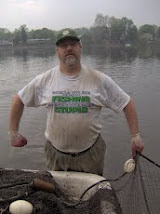KISSES THROUGH THE
MILKY WAY
A number of years ago
Janet went white water rafting on the Colorado River and had stopped at the
Phantom Ranch to drink a beer and to send me a postcard. The postmark had
stamped on it “mailed by mule” from the bottom of the Grand Canyon, and in the
postcard, she wrote that she was sending me kisses nightly through the Milky
Way.
Now, for a boy who grew
up in Harrison, New Jersey, a scant 9 miles from Manhattan, the closest I had
ever gotten to a Milky Way sighting was the candy bar.
Ever since that time I
have expressed an interest in finally seeing the “real” Milky Way.
On our recent trip to
Sedona Arizona Janet made it happen…of course!
WOULD YOU LIKE TO SWING
FROM A STAR?
Though stargazing was
not our original intent in traveling to Arizona, Arizona happens to be a GREAT
place for stargazing. The desert climate there is low in humidity so there are
clearer skies. Wide open expanses of land offer unobstructed views of the night
while distant mountains shield the dark skies from any residual urban glow.
And, at 4,300+ feet in
elevation the desert of Red Rock Country in Sedona is not as blisteringly hot
at night during the summer months and the winter temperatures are more
tolerable that in other colder destinations.
Plus, Sedona Arizona, and
the nearby town of Oak Creek, just happen to be “Dark Sky Communities”. They
are just two of a number of communities in Arizona that have shown an exceptional
dedication to the “preservation” of the night sky and are recognized for their
efforts by the International Dark Sky Association or IDA. Part of the efforts
of these two communities to limit sky glow pollution is by fitting street light
fixtures with directional hoods and using lower luminescent lighting.
Stargazing in Sedona is
a thriving industry and there are several tours available and online
guides to lead you to the best places to take in every clear night to see the heavens brimming with stars and planets.
Here’s the website for
IDA
Here’s a list of places
around the Sedona area that are great places to stargaze if you want to go out on your own.
MONSOONS AND HABOOBS
Not to belabor you all
with scientific thingamabobs and such, there are a few months where the Arizona
weather may not fully cooperate with stargazing. Roughly between July and
August is monsoon season, and thunderstorms and strong winds are regular
occurrences, making it difficult to see clear skies….or to breathe!
Haboobs by
the way are “dust walls” generated by thunderstorm activity.
If you’re interested in
reading more about this here’s a good website.
Want to get up close
and personal with a haboob? Watch this video first!
EXPLORING THE DARK SIDE
Now, you may think it’s
easy to look up at the night sky and say “wow,” but it’s quite another thing to
know what you’re looking at! Wanting to get jiggy with Jupiter isn’t quite that
simple if you can’t find it. Of course, some celestial displays can be easily
pointed out. Turns out the Milky Way is a vast hazy band of light where
individual stars cannot be seen with the naked eye and there it was stretching
across the night sky mocking me and my quest to see it. Or, Orion’s Belt, with
its three aligned stars, is easily pointed out, as are certain constellations
like the Big and Little Dippers.
But, it’s quite another
matter to see the bands of Jupiter, the rings of Saturn the Orion's Belt Nebula where new stars are being born, much to an astronomer’s delight! So, between
the “wow” factor and gaining knowledge of the heavens it’s best to go with a
tour guide.
 |
| taken by the Hubble Telescope |
FLY ME TO THE MOON
We went with Sedona
Stargazing. Each “tour” is limited to 8 groups or pairings and each group has
its own high powered GPS auto positioning computerized telescope. The
astronomer has two assistants and they provide chairs where you sit while your eyes
adjust to the dark and caution all to stow away all cellphones because one flash of light will force the adjustment process to begin again. Later the crew gives instructions as to how to punch in the coordinates
to focus the telescope on what the astronomer is talking about. (Make sure you
bring your reading glasses! Although they will gladly assist.) With the proper
coordinates the telescope whirrs into position and soon you’re looking at Saturn
and its rings or the Andromeda Galaxy or the bands of Jupiter! Especially fascinating for me (apart from the
Milky Way) was the Orion Nebula that appeared astonishingly bright through the
telescope!
OH, WHAT A NIGHT
Instructions to the
tour site were very specific and warned of exceeding the speed limit with
spirited officers policing the dark roads and nocturnal animals meandering all
over. We were given latitude and longitude coordinates as well as directions to
follow and we were the first to arrive at the appointed spot, a gravel lot. As
we waited, we heard the howling of coyotes and a dog in a nearby neighborhood
answering them. Although it felt like we were in the middle of nowhere, we were
actually on the edge of a small community. The stargazing took place on the
pitch of the Verde Valley school ball field.
The weather all the
week was roughly mid-60’s to low 70’s, but we made a point to pack winter coats
for the stargazing. It was cold and we were glad to have our coats.
We made our original
reservation for the stargazing early in the week, Tuesday, just in case the weather would force us
to postpone. It would have been awful to miss our chance for stargazing if we
scheduled on the back end of the trip. Sure enough, Tuesday was rainy and
cloudy and Sedona Stargazing called us to reschedule for later in the week.
There are two tours
nightly. In November the first one begins at 7:30 the second at 9:00 pm. Check
the website for current prices and schedules.
It was a night I will
never forget.
Thanks for reading.
Love Janet and greg
© 2021 by Greg Dunaj

































No comments:
Post a Comment